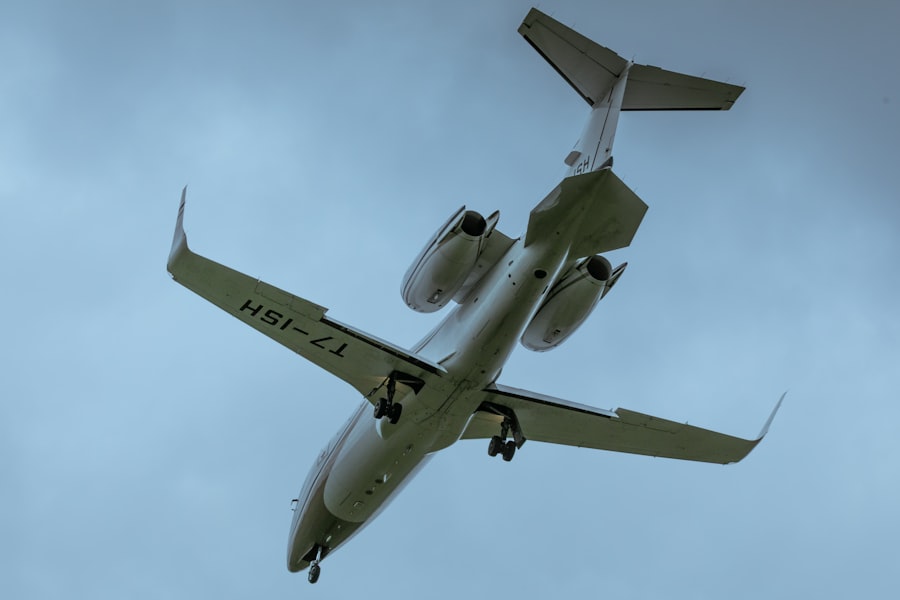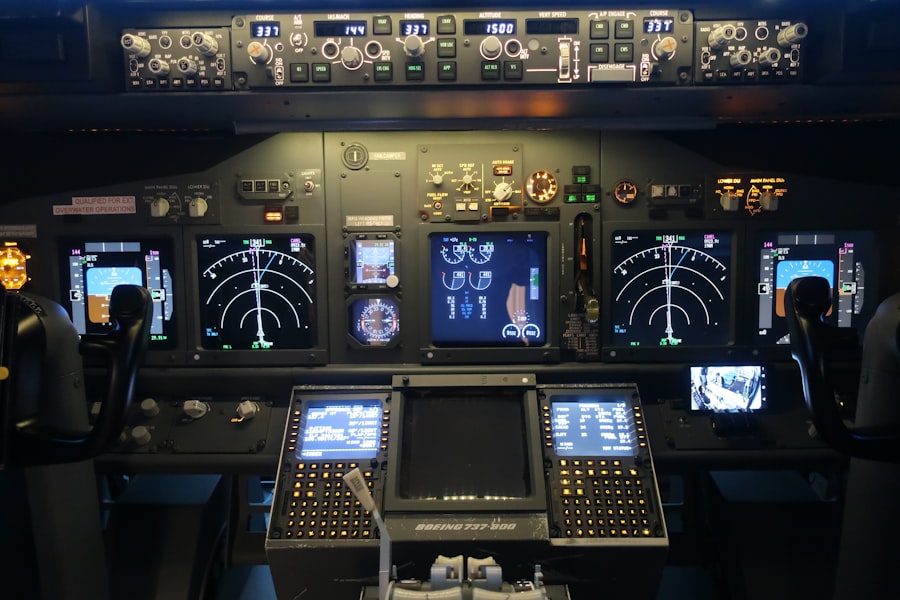The Airbus A321neo, a member of the A320 family, represents a significant evolution in commercial aviation, combining advanced technology with enhanced performance capabilities. Launched in 2016, the A321neo (new engine option) was designed to meet the growing demand for single-aisle aircraft that can operate efficiently on both short and medium-haul routes. With its larger capacity and extended range compared to its predecessor, the A321ceo, the A321neo has quickly become a favorite among airlines looking to optimize their fleets for profitability and sustainability.
The aircraft features a host of innovations that set it apart from earlier models. Notably, the A321neo is equipped with the latest generation of engines, which not only improve fuel efficiency but also reduce noise and emissions. This makes it an attractive option for airlines operating in increasingly environmentally conscious markets.
Additionally, the A321neo’s cabin design has been reimagined to enhance passenger comfort, making it a compelling choice for both operators and travelers alike. As airlines continue to adapt to changing market dynamics, the A321neo stands out as a versatile solution that meets the demands of modern air travel.
Key Takeaways
- The Airbus A321neo is a popular narrow-body aircraft known for its fuel efficiency and environmental impact.
- Its engine performance and technology contribute to its reputation as a reliable and efficient aircraft.
- The cabin design of the A321neo prioritizes passenger comfort and offers a flexible layout for airlines.
- With impressive range and flexibility, the A321neo is a versatile option for airlines looking to expand their routes.
- The aircraft’s maintenance and operating costs are competitive, making it an attractive choice for airlines.
Fuel Efficiency and Environmental Impact
One of the most significant advantages of the Airbus A321neo is its remarkable fuel efficiency, which is achieved through a combination of advanced aerodynamics and state-of-the-art engine technology. The aircraft is designed to consume up to 20% less fuel per seat compared to its predecessor, the A321ceo. This reduction in fuel consumption not only translates into lower operating costs for airlines but also contributes to a decrease in greenhouse gas emissions, aligning with global efforts to combat climate change.
The A321neo’s engines, either the Pratt & Whitney PW1100G or the CFM International LEAP-1A, are engineered with cutting-edge technologies that enhance their performance while minimizing their environmental footprint. These engines incorporate features such as advanced materials and innovative designs that improve combustion efficiency and reduce noise levels. As a result, the A321neo is capable of meeting stringent environmental regulations while providing airlines with a competitive edge in an industry increasingly focused on sustainability.
The aircraft’s ability to operate on biofuels further enhances its appeal as airlines seek to reduce their carbon footprints.
Engine Performance and Technology

The engine options available for the Airbus A321neo are pivotal to its performance characteristics. The Pratt & Whitney PW1100G Geared Turbofan engine is particularly noteworthy for its innovative geared architecture, which allows the fan to rotate at a different speed than the engine core. This design optimizes efficiency across various flight conditions, resulting in significant fuel savings and reduced noise levels.
The PW1100G has been lauded for its reliability and performance, making it a popular choice among operators. On the other hand, the CFM International LEAP-1A engine also offers impressive performance metrics, featuring advanced materials and technologies that enhance durability and efficiency. Both engine options are designed to provide operators with flexibility in terms of maintenance schedules and operational costs.
The choice between these engines allows airlines to tailor their fleets according to specific operational needs and preferences, further enhancing the A321neo’s appeal in a competitive market.
Cabin Design and Passenger Comfort
| Aspect | Metric |
|---|---|
| Cabin Space | Legroom, Headroom, Shoulder room |
| Seat Comfort | Cushioning, Lumbar support, Reclining ability |
| Interior Materials | Quality, Durability, Aesthetics |
| Noise Level | Interior quietness, Sound insulation |
| Climate Control | Heating, Ventilation, Air conditioning |
The cabin of the Airbus A321neo has been meticulously designed with passenger comfort in mind, reflecting contemporary trends in air travel. One of the standout features is the spaciousness of the cabin, which can accommodate up to 240 passengers in a high-density configuration. The use of modern materials and design elements creates an inviting atmosphere that enhances the overall travel experience.
The cabin is equipped with larger overhead bins that provide ample storage space for carry-on luggage, addressing one of the common pain points for travelers. In addition to spaciousness, the A321neo incorporates advanced lighting systems that can be adjusted to create a more pleasant ambiance during flights. The cabin is also designed to minimize noise levels, contributing to a quieter environment that enhances passenger comfort.
Furthermore, airlines have the option to equip the aircraft with modern in-flight entertainment systems and connectivity solutions, allowing passengers to stay connected during their journey. This focus on passenger experience positions the A321neo as an attractive option for airlines aiming to differentiate themselves in a competitive market.
Range and Flexibility for Airlines
The Airbus A321neo offers impressive range capabilities that make it suitable for a variety of routes, from short-haul domestic flights to longer international journeys. With a maximum range of approximately 4,000 nautical miles (7,400 kilometers), the A321neo can efficiently serve routes that were previously only viable with larger aircraft. This flexibility allows airlines to optimize their route networks and respond dynamically to market demands.
The aircraft’s range is complemented by its ability to operate from shorter runways, making it an ideal choice for secondary airports or regions with limited infrastructure. This operational versatility enables airlines to tap into underserved markets and expand their reach without incurring significant additional costs. As airlines continue to seek ways to maximize their operational efficiency and profitability, the A321neo’s range and flexibility position it as a valuable asset in their fleets.
Maintenance and Operating Costs

Maintenance and operating costs are critical considerations for airlines when selecting aircraft for their fleets. The Airbus A321neo is designed with these factors in mind, featuring advanced systems that simplify maintenance procedures and reduce downtime. The aircraft’s engines are built for reliability and longevity, which translates into lower maintenance costs over time.
Additionally, Airbus has implemented predictive maintenance technologies that allow airlines to anticipate potential issues before they arise, further minimizing operational disruptions. The overall operating costs of the A321neo are competitive within its class, thanks in part to its fuel efficiency and reduced maintenance requirements. Airlines can benefit from lower per-seat costs while maintaining high levels of service quality.
This economic advantage is particularly appealing in an industry where margins can be tight, making the A321neo an attractive option for both established carriers and new entrants looking to make their mark in the aviation market.
Market Demand and Competition
The demand for single-aisle aircraft like the Airbus A321neo has surged in recent years as airlines seek efficient solutions for both domestic and international travel. The rise of low-cost carriers has further fueled this trend, as these airlines prioritize cost-effective operations while still providing quality service. The A321neo’s combination of capacity, range, and fuel efficiency positions it well within this competitive landscape.
However, competition in this segment is fierce, with Boeing’s 737 MAX series serving as a direct rival to the A321neo. Both aircraft families offer similar capabilities, but airlines must weigh factors such as performance metrics, operating costs, and passenger experience when making purchasing decisions. As market dynamics continue to evolve, manufacturers must remain agile and responsive to customer needs while innovating to maintain their competitive edge.
Future Developments and Upgrades
Looking ahead, Airbus is committed to continuous improvement and innovation within the A321neo program. Future developments may include enhancements in engine technology that further reduce fuel consumption and emissions or upgrades to cabin features that enhance passenger comfort and connectivity options. Additionally, as airlines increasingly focus on sustainability, Airbus may explore options for hybrid or fully electric variants of the A321neo.
The ongoing evolution of air travel necessitates that manufacturers remain proactive in addressing emerging trends and challenges within the industry. By investing in research and development, Airbus aims to ensure that the A321neo remains at the forefront of commercial aviation technology while meeting the evolving needs of airlines and passengers alike. As air travel continues to rebound post-pandemic, the future looks promising for the A321neo as it adapts to meet new demands in an ever-changing landscape.


